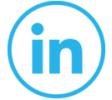David Borenstein, MD - 17th July 2019 (LDN, low dose naltrexone) from LDN Research Trust on Vimeo.
Linda Elsegood: Today I'd like to welcome back Dr. David Bornstein from New York. Thank you for joining me today. David. Now I know you've been prescribing LDN for many, many years, but first of all, could you tell our listeners your medical background, please?
Dr David Borenstein: Sure. Well, I initially trained in medicine at the Technion, Israel Institute of Technology in Haifa Israel.
I came back to do my internship in Staten Island hospital in New York, and I did additional training in radiation oncology and rehabilitation medicine at the State University of New York at Stony Brook. And then I opened up a private practice here in Manhattan. And I've been working here in Manhattan ever since.
Linda Elsegood: So tell us a little bit more about your practice, what you actually do there.
Dr David Borenstein: Sure. I have an integrative medical practice and I do various different sorts of integrative approaches in functional medicine, approaches to issues such as, um, we work with a lot of patients with chronic fatigue, fibromyalgia, autoimmune diseases like MS and Crohn's, hormone replacement.
Dr David Borenstein: I work with patients who have issues with their guts. And we also do a lot of work with patients who have chronic pain. We do a lot of work with STEM cells, platelet-rich plasma, uh, and prolotherapy. We also do intravenous drips for our patients. So we offer a wide, wide variety of options for people looking.
Linda Elsegood: I haven't had anybody explain about STEM cell treatment and possibly you could get in England, but it's not something that's been on my radar. Could you tell us a bit about the STEM cells?
Dr David Borenstein: Sure. Basically, a STEM cell is by definition, the cell that can become any other cell in the body, so it's a very primitive early-stage cell that eventually can become lung tissue or hard tissue or bone. So what we do is we obtain, um, cells from either adipose fat tissue or we use umbilical cord, um, cells from other people, and we use it primarily to treat orthopaedic conditions. People with neck, back, shoulder, knee pain, hip pain, and we do a lot of work, uh, with that, uh, with that regard.
Um, we used to do some more work with Crohn's and autoimmune diseases, but we're primarily focusing now on orthopaedic conditions with a good amount of success and saving a lot of people from joint replacements, which is a good feeling. Wow. Yes. But you were saying. That the STEM cells can help replace all these different things.
How does the STEM cell know what you want it to do? The mechanism of action is poorly understood. We think that it either listens to a homing signal and does repair of the cell, or it actually may differentiate into that particular tissue. The mechanism, again, is poorly understood. Um, but you know, the basic science researchers are looking into that.
Dr David Borenstein: We do know from people doing STEM cell deployments for many years, that there is a good efficacy in treating orthopaedic conditions, and it's promising for treating things like cardiopulmonary diseases, neurological conditions, and um, and various other chronic medical conditions. The potential is unlimited, and this is like a very exciting field of medicine today.
Linda Elsegood: So if somebody needed a hip replacement. How would you treat that with STEM cells?
Dr David Borenstein: Well, we would do is we initially evaluate the patient, have them come to our office, um, do a complete history, physical examination, look where the tender points are, looking at their range of motion, look at any scans, CAT scans, MRIs or x-rays.
And we will see if the patient is a candidate for having STEM cells for the hip. We generally like to use patients who are younger, uh, because. You don't, you know, the older patients, they're also candidates, but you don't want to put an artificial hip into patients who are in their thirties forties or even in their 50s because chances are because people are living into their eighties and even their nineties they're probably going to require revision of that.
And that's something you probably don't want to do. And what we would then do is we would inject. Either adipose-derived cells or umbilical cord cells into the hip joint, as well as all the attaching ligaments around the hip to make sure that the hip is nice and stable and roughly success rates depending on the age, depending on the severity of the disease, roughly in the high 70th percentile success rate, which is pretty good for, uh, having to avoid a hip replacement.
Linda Elsegood: Oh, definitely. Um, a friend of mine, his sister had problems, um, birth and she had to have a hip replaced, I think when she was. Like 15. She was very, very young. Uh, cause she couldn't run. One leg was longer than the other, and it just wore the hip. And she had another one. Uh, when she was thinking was about 35 and then another one just before she was 60.
So if she was able to have saved herself from having all these surgeries. I mean, that would just be amazing, wouldn't it? How long does it take for those STEM cells to do their work?
Dr David Borenstein: It can take anywhere from several weeks to several months, and sometimes I have to have the patient come back. A few months later and we can boost the area where we treated with either something known as platelet-rich plasma, which are platelets we extract from, from blood, whichever, a lot of growth factors or another procedure known as prolotherapy, which is the oldest.
The oldest regenerative medicine technique will use sugar, water, dextrose, and lidocaine, and we can add some other things there. It causes localized inflammation. Okay. And it causes growth factors to come to the area and help tighten up the ligaments and, um, help improve the, um, and repair, uh, the local tissue in the joint.
So it's exciting stuff. It is, isn't it? Very, very exciting. And of course, the injection into the joint is far less traumatic for the body than having surgery to replace a hip, isn't it? You know? Not only is it less traumatic, now that's way less traumatic. It's done under local anaesthesia. So the risk goes down tremendously.
You don't have to be in a hospital. You can return to work in a relatively short period of time. I mean, if you're doing a desk job, for example, if you're getting a procedure done on a Wednesday, you can go back to work on Monday. Obviously, if you're doing, if you're working, you know, as a lineman on the, uh, for the electric company, you probably want to, you know wait a little bit longer to go back to work, but most people with desktops can go back within five or five to six days, and they don't have to be in an inpatient hospital, do any outpatient physical therapy. Now in the future, you know, two or three months, four months down the line, they may, we may need to give them some physical therapy, but it's not the inpatient type where you're stuck in a hospital or a subacute facility and you have to be there for a while.
Linda Elsegood: So it's, you know. It's nice because it allows you to go back to work in a relatively short period of time. and when you were saying you prefer younger people, I'm just wondering if I'm in the age group. Older people.
Dr David Borenstein: Let's put it this way. Well, let's, we have a couple of ways we can, we can look at it for patients. We're using adipose-derived cells. You know, usually, I like. If their patients are in there anywhere from the 30s too, let's say their early seventies they usually should have enough cells for doing the job.
But for patients who are in their mid to late seventies eighties even nineties I prefer sometimes to do the umbilical cord cell because I know well, they're not coming from the patient. I know they're probably going to have a high level of cells as you get older. The number of stem cells in your body are going to come down and they, they will drop.
There's no question. Someone who's, you know, 20 is going to have more STEM cell than someone who's 50, and someone who's 50 is going to have more STEM cells than someone who's 70 on, on average. So, um, usually I find that if the patient is going to be, you know, past your mid-seventies I may want to, you know, use only the umbilical cord cells because they know they have a, a good number in them.
Now, some patients will say, you know what, Dr Bornstein, I don't care. I want to use my own cells and I'll respect that and I'll use, I'll use the adipose. Fine. But you know, I have to give the patient the option. Of course. Yeah. No.
Linda Elsegood: You have first-hand experience and knowledge about LDN? When did you first start prescribing?
Dr David Borenstein: Oh, at least 15 years ago. And the history is very interesting because I had a patient come in, and this is well before there were LDN websites, well before LDN research. Well before the information that we had, and a patient came into me and wanted LDN and I said, well, let me look into it. I was a little sceptical.
I didn't know much about it, so I did my research and said, uh, all right, let me give this a try. And I tried it on this patient. I think it was for, I believe it was either for Multiple Sclerosis or Crohn’s and, um. I got some very, very good results. So I, um, discussed LDN with a number of different compounding pharmacists, uh, one here in New York and one in, uh, one in Florida.
And I learned more about it. I did some research on it, and I started using more and more LDN in my practice. And I got some really amazing, amazing results and it just mushroomed. That has continued and we’re using it for the vast majority, everything that people are using today. I was using LDN for, you know, at least, you know, almost 15 years ago and great, great success stories, uh, multiple different, uh, conditions, and I just never looked back.
Linda Elsegood: Could you share some of those success stories with us?
Dr David Borenstein: Oh yes. I said, for example, a number of different people with Crohn's disease, and for some reason I find the inflammatory bowel, Crohn's disease respond beautifully to LDN. I have had maybe two or three patients who really did not respond the way I wanted to, but they were very severe cases, but the vast majority of my Crohn's patients did beautifully on LDN, and this is, you know.
This is my early experience. So the vast majority of my patients were either Crohn's or MS and the MS patients also experienced quite, um, quite great results, lack of progression of the disease, some improvement in their fatigue and optic neuritis. The patients many times tried the, you know, the ABC, uh, medications, you know, and just didn't do well on them and didn't want to take them. So he did the LDN and they've never ever looked back again. So. Those are the two biggies. We also started using LDN for patients with various sorts of malignancies. I had a patient with a lung tumour, for example, and we put on LDN and it was just stable.
Didn't go anywhere. It was just sitting there, you know, and she was on it for many, many years. I lost contact with her after a while. I think she moved out of the country, but from a number of different years, she had a very stable, um, um tumour in her, in her lung, didn't, didn't do very much for it. And also we've been using it more and more since the studies came out from Stanford University on fibromyalgia.
And we've got some, you know, some positive results. I mean, I work with, in my practice, we incorporate LDN. We also use it in conjunction with other treatments. I find for fibromyalgia, it definitely takes the edge off. And, but you have to, you know, do a vast, um, uh, treatment option, um, working with their hormones, their sleep and infections.
I also find it's beneficial for Lyme disease. I do some, some work with Lyme disease, but overall, it's primarily MS, uh, autoimmune-related diseases that I use LDN for.
Linda Elsegood: Do you ever use it for mental health issues?
Dr David Borenstein: Yes. We've been getting more requests for that. Uh, primarily with the osteoarthritis, uh, conditions.
And I do have patients who swear up and down that it does improve their pain. Again, have patients who do not get any sort of relief. Um, I find that works better with the osteoarthritis and it does with the rheumatology conditions, but I, the number of rheumatoid patients that I have been a little bit more limited in that regard.
I also, patients have been using it for reducing alcohol cravings, which we find has been, uh, more, and we're getting more requests to do, LDN for that as well.
Linda Elsegood: Have you been asked to use full-dose naltrexone, the Sinclair method for alcoholism? No, not at all. I haven't gotten any, you know, I'm aware of it, but I haven't gotten any requests for it yet. Okay. Because they have very good success rates with that, whereby you can continue drinking and you take the tablet.
I can't remember now, it was an hour or two before you start drinking, but it takes away the craving. So where you would probably. You know, have 10 pints of beer, you might only have two. And then gradually you get, so you can take it or leave it. You don't actually need to carry on drinking. That's really interesting for people who, um, they call it now, don't they?
Alcohol use disorder and it is, uh. Yeah. A bonafide condition. You know, it's not a case of saying to people, stop. These people can't just stop. So that is an alternative for, maybe you'll have more people coming to you asking you for that. Now. It's interesting because you know, you know, one of the side effects of LDN can be projectile vomiting with alcohol consumption, although I don't see too much of it.
Dr David Borenstein: I know we've had cases of that, and it is a known, um, side effect of taking LDN. So even that alone may discourage people from, uh, from trying to take alcohol. Uh, we've had, um. Probably one, two, three, four, maybe five or six patients who've used it for addiction. Um, and they're quite happy. Um, again, most people who take LDN for the condition that they want to be treated, tend to want to continue on, on the LDN for the condition. It is very rare for people to stop it. Very rare. I find most people just want to continue it for whatever condition they have. Well, it's also the boosts the endo endorphins, which is the body's own natural feel-good fight or isn't it? So that should really give you a boost anyway, shouldn't it?
Linda Elsegood: I know people say, and I've been taking LDN 15 years or over 15 years. That it protects them. They don't catch viruses or colds or become sick in any which way. I mean, LDN works amazingly for me. I'm not complaining whatsoever, but I still get colds and flu and whatever's going around, it doesn't protect me in that way.
Um, but there are many people that say that you know, they haven't had a cold since I've been on LDN, so I don't know why I'm different, but, uh, it can happen. Well, that's amazing. You mentioned that, cause I did a consult, uh, late last week and it was for an ms patient and the patient had ms and you know, we renewed her LDN.
Dr David Borenstein: But the comment always comes up that treating for MS, but they'll say, Oh, I haven't got a cold all winter. And I get that over and over and over again. So, people, it's very rare people come to me and say, I just want it necessarily to boost the immune system. I get that. But they usually have another condition.
They usually get colds and this season, last season, the season before they've, they've never gotten colds. So it's definitely a benefit to taking LDN and we see it all the time.
Linda Elsegood: Now people can come and see you and have a consultation face to face, but you also do telemed consultations. Could you tell us about that?
Dr David Borenstein: Sure we do, uh, telemed consultations all over the United States, and we do it all over the world. So we've had patients who we've done it in the UAE, Middle East, Mexico, uh, Europe. So yes, we have patients from all over the world. We're interested in getting, uh. Getting LDN. And um, many of them come to see me here in New York because I'm right in the middle of Manhattan, and they may come to see me first and then we can do everything over the phone and we do everything over the phone initially.
So yes, we can certainly do telemedicine anywhere. There's a phone connection.
Linda Elsegood: So how does it work? I have people say to me. Do you know what happens if I need blood tests? Do you know what happens? So if somebody came to you today and said they would like a telephone consultation and there, I don't know, in France, how would you go about, um, finding out all their medical details, etc.
Dr David Borenstein: Well, many times they'll email me all the medical reports before the initial consultation, so I'll have all of their medical records sent via email, or if they want to fax it to me, they can. But today email's much easier. And we do a complete history over the phone. We get all the information we can.
The most important thing is, one thing about LDN is it's, it's really safe as long as you're not taking narcotics. Um, and it's only, you're not mixing the LDN with certain other medications that can. Um, go against LDN. For example, we know with MS there are certain medications you're not supposed to take with LDN.
Um, as long as you, you're clear with that, it's usually not a problem. I remember using medication at less than one 10th the prescribed dose. So long as you're not having any, um. Taking any narcotics, you stopped in narcotics before doing procedures. You know, you're not drinking alcohol at the same time, knowing you can have projectile vomiting.
We, you know, it's a pretty safe medication and then we can prescribe it. Uh, some people, um, will. Get it from pharmacies here in the United States or, um, that's usually, or they come to New York, um, and they can get it here in New York or any other pharmacy that can be prescribed here in the United States.
So it's usually pretty straight forward. Um, our dosing, you know, we can tell them how to dose. Um, I find that certain, you know, for example, certain patients, they want. The maximal dose all the time, but they don't understand is that the maximal dose for a person weighing 250 pounds is very different from a patient weighing 125 pounds.
And, um, even Dr Bihari when he was doing it, found that many times. You would. If you give too high of a dose, you can cause too much, uh, to prolonged blockage. You want to lower the dose. So every patient, it's not so easy. You just, you know, give the maximal dose and have a nice day. You also have to, uh, take, you know, take sex and weight into account when you are prescribing and take an account.
There are side effects, you know, difficulty sleeping, vivid dreams. So all of these have to play an account. Also, a patient has neurological disorders. Certain patients over a certain dose get increased specificity. So, you know, it requires, you know, some experience in prescribing. It's not, here's the medication, have a nice day.
And every, every, uh, disease, we're going to approach it from a very different perspective. For example, in patients with inflammatory bowel disease. I find giving a full dose at the beginning is a better way of treating them as opposed to stepping up the dose. With Hashimoto's, you've got to go very, very slowly and the blood tests have to be done just to make sure the antibody levels are dropping and that they're not getting hyperthyroid.
And that's where he gets a little bit tricky. But most of the patients do their blood tests. They do them locally with their local doctors. They send it to me with theirs, when we get their LDN prescriptions and you know, everything works out well. .
Linda Elsegood: So how do they go about having the blood tests from you? Do you send them a kit or the information to take to their own doctor? How does that work?
Dr David Borenstein: Well, generally, generally. Uh, with most cases, yes. For what we do, we don't need blood work. The vast majority of patients either have blood work from their local doctors, or for example, if they're having Hashimoto's, someone's prescribing their blood work and prescribing their medication, and we'll just get copies of that lab work just to make sure that the antibodies are going down and not becoming hyper.
We have to warn the patients that as the antibodies come down, you're going to need a dose adjustment and they should get blood work to reduce their dosage of medications. Um, and you know, the antibody levels can drop quite dramatically. And you know, if you're, if you're having a good dosage, it can actually make you a little bit hyper.
So you have to warn the patient about that and just check the, have them check their blood levels locally. And usually, everything's fine. and people always want to know.
Linda Elsegood: How soon would you say in your experience that patients notice an improvement on LDN?
Dr David Borenstein: It varies. I find that inflammatory bowel disease patients usually notice an improvement quite quickly.
I think some of the other autoimmune diseases may take a little bit of time. It all depends. Um, people react differently. We're all bio-individual. None of us are exactly the same. We're not all Toyota Corollas, so it can be anywhere from several days to several weeks, even to several months. I usually recommend that the patient be on the LDN for at least four to six months before you even think of discontinuing it because it can take that long in order to see if they're responding or not.
Linda Elsegood: Exactly. I mean, I've had some people say to me. Um, I'm taking liquid LDN and I've nearly finished the bottle. I've been on it nearly a month. Uh, it hasn't done anything, you know, I'm thinking of stopping, you know, it's not a miracle that it's going to happen. You know, just like that. You've got to give it time, haven't you?
Dr David Borenstein: Exactly. As you were saying. Well, several things are sort of, you got to give it time and you have to make sure that you're getting it from a place that's reputable, that you're using a good quality LDN. And I only use, you know, a number of different pharmacies that I use. Sometimes I'll change the patient from an oral to a, say, a transdermal, just to see if there's going to be any difference in the way they're, they're feeling. Remember a lot of patients with severe, for example, inflammatory bowel disease, they may not be absorbing the LDN, so doing it transdermally may be beneficial.
I find many times in kids, for example, it may be more beneficial to do a transdermally then than orally, and sometimes they have other cofactors. They have just poor absorption. You've got to say, Oh, well, why aren't you absorbing it? Maybe you have low stomach acid, so. The vast majority of the time, the patients are quite pleased.
But, um, and this would make the difference between someone who, who does LDN and someone who does LDN is knowing if there's a problem, what do you do? What's the next step? What do you have to look for? And that's the that makes all the difference in the world.
Linda Elsegood: So if somebody would like to have a telephone consultation with you, is there a waiting list.
Dr David Borenstein: We can always accommodate patients if they, um, depending on the day, the month of the year, uh, you know, typically you're very busy, sometimes very slow if they are interested in having a telephone consultation, they can just call our office. The number is 212-262-2412 or 212-262-2413. And if they want to learn more about the practice, they can go to my website at www.davidborensteinmd.com and they can look at the website and see what we offer and if they're interested in making a telephone consultation, just call the office and we're more than happy to schedule them at the earliest possible time.
Linda Elsegood: Well, thank you very much for having been our guest today. 30 minutes went very quickly. Oh, thank you for having me.
Dr. David Bornstein is New York's leading integrative and functional medicine physician. His patients are diagnosed and treated in an integrative manner to promote recovery and continuing good health. Call 212-262-2412 for an appointment. Telemedicine appointments are available for LDN prescriptions.
Any questions or comments you may have pleawse email us at Contact@ldnresearchtrust.org. I look forward to hearing from you. Thank you for joining us today. We really appreciated your company. Until next time, stay safe and keep well.







